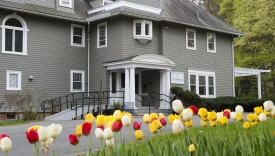Natural Science 0225 - Ecology NE Old Growth Forests
Fall
2014
1
4.00
Lawrence Winship
10:30AM-05:00PM F
Hampshire College
315240
Cole Science Center 102
ljwNS@hampshire.edu
Not long ago, in the mid-1800s, the landscape of New England was primarily rolling farmland. Stands of trees covered less than 20% of Massachusetts. Now the reverse is true, and over 80% of the land is covered with young woods. The same kinds of trees are back, but the forests are substantially different and the impacts of human activity remain. Yet hidden within our second and third growth forests are patches of trees that were never clear-cut and in some cases were not cut at all. In those places, called "old growth" forests or "historic woodlots," we can get a glimpse of what the pre-colonial woodland might have been like. We can study forest ecology in the absence of direct human disturbance. The significance of old woods and the ecology of the plants, animals, and soil organisms found on sites undisturbed by intense human activity are "hot" topics among conservationists and forest managers alike. In this course, we will visit old growth sites, learn how to identify, age, and census trees, and how to read the history of a site. We will locate and map special trees, soils and plants. We will examine the literature on both the social and ecological significance of old trees and old soils. Students will complete group or individual projects.
Independent Work Quantitative Skills In this course students are generally expected to spend at least 6 to 8 hours a week of preparation and work outside of class time.


